3A.3 Population and setting
Page last updated: September 2016
Information Requests
- Describe the setting of the model and the demographic and patient characteristics for the modelled population (Subsection 3A.3.1)
- Translate the important applicability concerns associated with the clinical data in Subsection 2.7.1 and identify any remaining uncertainty (Subsection 3A.3.2)
3A.3.1 Demographic and patient characteristics, and circumstances of use
The setting of the economic evaluation should be the Australian health care setting, with the modelled population representing the target Australian population indicated for use of the proposed medicine (Subsection 1.1.2), and the circumstances of use consistent with the clinical management algorithm (Subsection 1.2) and the proposed restriction or indication (Subsection 1.4).
Describe the demographic and clinical characteristics of the modelled population using summary statistics, including information on distributions around the central estimate (eg standard deviations, confidence intervals). Relevant patient and clinical characteristics may include age, sex, ethnicity, medical condition and severity of the medical condition, and comorbidities. Indicate which patient characteristics are incorporated explicitly and which are implicit (associated with use of other data) or not included.
Describe and justify how heterogeneity in patient characteristics (if relevant) is represented in the cost-effectiveness analysis.
Provide details of any additional circumstances of use relating to the proposed medicine that are relevant to the model setting or population, and detail how they are incorporated into the model. These may include:
- restrictions on the position of the proposed medicine in the clinical management algorithm (eg first-line treatment or second-line treatment), stopping or continuation rules etc
- specific requirements of the proposed medicine in terms of geography, facilities or location of delivery (including any limitation to the hospital or other approved setting, or any specification of equipment or facilities that need to be available during or soon after administration).
3A.3.2 Applicability issues and translation studies associated with the clinical evidence
For each difference between the clinical evidence setting(s) (including population and circumstances of use) and the Australian setting that are identified in Table 2.7.1 as potentially important, design a translation study. The translation study should determine whether a quantitative adjustment to model inputs are necessary and, if so, the nature of the appropriate translation. Where there are inadequate data for a translation study, identify this as an issue that will remain a source of uncertainty in the model.
The translation study should include:
- the issue and the specific question to be addressed
- the data used and their sources (justify the choice of data where there are multiple possible sources)
- the methods of analysis, with sufficient details to enable independent verification of the analysis (common methods are described below)
- the results, including an estimate of the comparative treatment effect (both relative and absolute) and the 95% confidence interval, and a description of how (or whether) the findings are applied in the model
- a description of any residual uncertainty, and sensitivity analyses that are proposed to address this uncertainty (see Subsection 3A.9).
Take care when converting relative treatment effects across jurisdictions with different baseline risks. Ensure that the baseline risk (ie prognostic characteristics) of patients does not differ between the trial evidence and the target population, or that patients are not expected to respond better to the proposed medicine or the main comparator in one setting than in another setting.
Common methods for translation include subgroup analyses, regression analyses, meta-regression or use of other published studies. Justify the selected approach.
Subgroup analysis
For subgroup analyses, follow the same methods outlined in Subsection 2.6.1.
Regression or meta-regression
Regression analysis has an advantage compared with stratified analyses based on subgroups because it can examine more than one covariate (or difference between the clinical trial participants and the target PBS population) simultaneously. Where multiple trials are available, use a meta-regression, if appropriate. Meta-regression may be used at the study level or at the individual patient level (where the study is entered as a covariate). Only use a meta-regression at the study level if the number of trials is large (5–10 trials for each covariate examined).
Where a regression analysis is used, present and interpret the results in the main body of the submission, and provide the following additional details in an attachment:
- a clear description of the regression method, the associated assumptions, how these assumptions were tested and the results of the tests
- the statistical commands or syntax used in the analysis, with a description of the variables (including a description of the thresholds used to define categorical variables)
- the direct output from the statistical program
- the dataset used in the statistical program (or a justification, where this is not provided).
Published studies
If it is not possible to inform translation using the direct clinical evidence for the intervention, describe the reasons and seek relevant published data. Systematically identify published studies concerning the proposed medicine (or comparator) or the same class of medicines in the proposed eligible population. Present the search strategy and selection criteria in an attachment.
Report the relevant findings from the included studies. Describe the findings in relation to the proposed medicine, and apply the findings to inform the translation.


